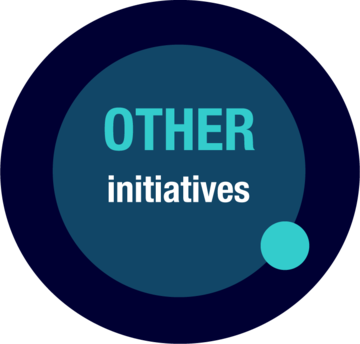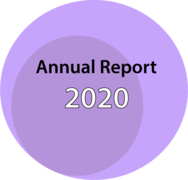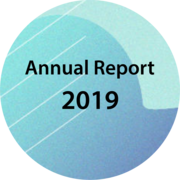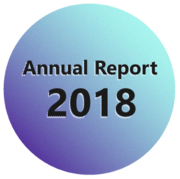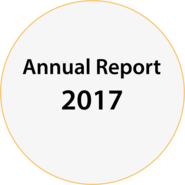A year in review
I am pleased to share the work and achievements of Information Systems & Technology in this 2021 Annual Report. The demands and expectations of many IST services continued to increase over the past year as the University community adapted to ongoing changes to work and learning restrictions influenced by COVID-19. The main articles that follow highlight some of the work accomplished to continue to support these distributed, remote environments, as well as enhance the delivery and support of many centrally managed IT services. Additional accomplishments are noted under the Other accomplishments section, while planned initiatives and areas of focus are noted on the Upcoming initiatives page for 2022.

Bruce Campbell
Chief Information Officer
WCMS 3

What is WCMS 3?
WCMS 3 is the University’s next generation Web Content Management System. WCMS 3 creates a modern, flexible, and accessible foundation for the University’s diverse webspace needs. WCMS 3 is built upon the latest version of Drupal and technologies that underpin it, and with a continuous release upgrade model, future updates to WCMS 3 will take much less time and be more seamless for developers and users alike.
New technologies
For WCMS 3, Waterloo also chose to move the hosting of the WCMS to a Drupal Platform-as-a-Service cloud platform. A request for proposal (RFP) was completed in 2020 that yielded our selected vendor, Pantheon. The partnership with Pantheon has allowed us to enhance the worldwide reach of the WCMS and utilize Pantheon’s rapid deployment platform to release updates far more rapidly.
Migration of sites
The move to WCMS 3 is a complete re-write of the WCMS. The project team has created, and continues to refine, a migration toolset that will provide some automation for sites moving to WCMS 3. The project team acknowledges and appreciates the significant efforts of the entire campus web community to help move us to this new platform.
Learn more about this work
To learn more about this project, please visit the Building the Next WCMS website.
For more details on site migrations, FAQs, training and support options, and post-launch information, please see the see the Web Resources site.
Moving Quest to Oracle Cloud Infrastructure

Moving Quest to Oracle Cloud
Quest to Oracle Cloud Infrastructure (OCI)
As technology and needs change across the University, we review current solutions and technical architectures to determine where improvements can be made, identify gaps, and work to improve the service for our clients.
Quest, the University's student information system, comprises a mix of PeopleSoft Campus Solutions and Oracle databases. At one time we had many major systems leveraging our Oracle database license; today, it is just Quest.
This prompted IST to evaluate options to better leverage the resources spent in this area. After review, it was evident that moving all components of Quest to the Oracle Cloud environment would provide significant benefit for the University and provide additional tools (Oracle Cloud Infrastructure) to help automate ongoing back-end technical work.
Leveraging OCI's high-performance computing capabilities to optimize your overall experience
Oracle's next-generation cloud infrastructure will provide a modern, high-performance environment for our Quest system. Leveraging real-time data analytics, the student information system team will be able to quickly scale development and production environments to meet demand. This leading-edge technology will ensure we're in the best position to respond to feature and functionality requests, better supporting and enhancing your overall experience.
More about this project
The Quest to Oracle Cloud project began in the spring of 2021. With the incredible support and expertise of the functional departments that support Quest, significant technical work was completed during the summer term and we are now planning for the February 2022 go live. Visit the Quest to Oracle Cloud project page to learn more about this work.

“Rarely does one project allow us to simultaneously modernize technology, improve service and reduce costs. This project will do all three, and provide additional automation for ongoing backend operational tasks.”
- Daryl Dore, Director, Enterprise Resource Planning Systems
Campus Wireless Refresh

Campus wireless refresh
Wireless is the primary, and often only, means of connectivity for students across campus. Prior to beginning this most recent upgrade of the campus wireless network, the equipment on campus was two generations behind current technology. In addition to aging hardware, the needs and expectations of wireless service was continuing to increase. A refresh of the wireless equipment is required to both improve service delivery and maintain a supportable infrastructure. The last refresh was completed in 2013.
About this work
At the start of the project (mid-2020), there were 2,745 access points (APs) on campus, 2,544 access points in residence and 471 access points in the Affiliated and Federated Institutions. The goals of the project in addition to replacing the aging access points with the newer Wi-fi 6 standard include:
- Upgrading aggregate bandwidth for clients
- Improve failover and redundancy
- Deploy network analytics and reporting engines
- Deploy Identity Services infrastructure for network access
- Position the environment for further add-ons, including location-based services and location specific analytics
- Replacing aging access points (APs) with the newer Wi-Fi 6 standard
Replacing access points with Wi-Fi 6 standard
The newer Wi-Fi 6 (802.11ax) access points represent a multi-generational leap forward from the previous hardware providing clients with higher throughput, lower latency, higher capacity, and increase coverage in the 2.4Ghz band.
With Wi-Fi 6, up to 4x more devices can be connected to a single access point than the previous standards while simultaneously providing more data. This is accomplished using Orthogonal Frequency-Division Multiple Access (OFDMA) and Multiuser Multiple-Input Multiple-Output (MU-MIMO) and is the biggest improvement to Wi-Fi performance.
The access point is able to communicate with client devices in parallel. The previous generation (OFDM) operated serially whereby each client received a time slot or the whole channel bandwidth requiring other clients to wait their turn. With the older technology as more client joined more delays and lags were experienced. The parallel operation also provides up to 4x increased average throughput even in congested environments.
Other advantages of Wi-Fi 6 include reduced data latency by optimizing packet scheduling resulting in improved performance of voice, video and gaming traffic. Furthermore using Target Wake Time (TWT), clients that support the Wi-Fi6 standard may consume two-thirds less power increase battery efficiency
In addition to access points being replaced, the entire Core Wireless Infrastructure was upgraded, including the Authentication and Authorization systems, management and analytic systems, Rogue AP detection and containment, and a new captive portal.
Jira Service Management migration

Between May and October 2020, IST launched an investigation and pilot of Atlassian's Jira Service Management (JSM) platform with the goal of implementing a standardized platform for service and ticket management while also providing a simpler, user-friendly experience for customers and service desk agents alike. The pilot would also help determine whether JSM would be a suitable replacement for the legacy Request Tracker (RT) system. The work proved successful, and between November 2020 and November 2021, IST:
- migrated IST client-facing support queues to JSM
- hosted information sessions with campus partners interested in using JSM and Confluence Cloud
- migrated on-premises Confluence (wiki.uwaterloo.ca) users and spaces to Atlassian's Confluence Cloud environment
- migrated the IST Knowledge Base to Confluence
- migrated common IT support request forms to JSM
- migrated additional IST-owned RT queues to JSM (90% complete)
- moved the Request Tracker -general- queue to JSM
IST will continue to meet with campus groups to discuss their ticketing needs and how we can support them in the migration, including Confluence knowledge base integration and setting up their own customer portals.
By the numbers
- 128 Projects created in Atlassian Cloud
- 32,000 tickets created in IST Jira project (as of December 7, 2021)
- 30% of new requests originating via the IST Jira Help Portal
- Over 300,000 views of articles in our Confluence knowledge base space since November 2020
- Over the past year, we have received 3,653 reviews from our clients, with an average rating of 4.9/5
Ready to learn more?
Visit our Jira Service Management website to learn more about this tool, the benefits, and how you can get started with JSM.
You might also be interested in reviewing the IST Jira Help Portal and IST Knowledge Base

“Jira Service Management has an intuitive interface, which makes it easy to learn, and easy to teach. The automation of simple tasks like ticket triage improves accuracy, time to first response, and frees up time to work on more meaningful things. The addition of Jira Insight for asset management, and other add-ons from the Atlassian Marketplace, gives me confidence that the platform will be flexible enough to meet our needs for years to come.”
- Shayne Dyck, Business Systems Analyst, Co-operative Education
Ready for log4j

Ready for log4j
The security vulnerability in the ‘log4j’ software library has dominated headlines since news came to light on December 3, 2021. This library is pervasive in a myriad of software on the Internet written in the Java programming language. Countless organizations across the world are affected by this issue, and the University of Waterloo is not immune. With many organizations scrambling to understand the impact of this issue on their operations, UWaterloo has fared relatively well. So how did we do it?
Network security scans
First, for over the last decade, IST has been performing security scans of the campus network. From these scans, the IST security team knows what services might have vulnerabilities, and how exposed those services are to threats (e.g., Internet accessible, or not). IST also maintains a database of IT contacts for each network device so the security team has an idea of the nature of each device and who to contact in case an issue is found. Throughout 2021, the IST security team has been enhancing the scanning capability with the installation of vulnerability scanning agents on servers and workstations. This provides considerably more insight into the security posture of the software on each network device.
Active monitoring of news and alerts
Second, the IST security team monitors social media for new threats and receives alerts from partners such as the Canadian Centre for Cyber Security. When made aware of the log4j issue, the IST security team was able to leverage the scanning data to quickly identify where log4j was in use, and assist IT staff with putting mitigations in place. Given the pervasiveness of the issue, the team activated the cybersecurity incident response protocol. The team also identified, through network monitoring, where successful reconnaissance attempts were made by attackers, and put containment measures in place for the two services affected. Fortunately, the services in question do not collect, store, or process sensitive information.
Pandemic teaching and learning challenges

Rising to pandemic teaching and learning challenges
Augmenting edtech for remote learning
By winter term of 2021, the pandemic (that some thought might run its course in a few months) prompted Waterloo to deliver all courses remotely for a third term. Instructional support groups in the Keep Learning (KL) Planning team and KL Website team had met at least twice weekly most of that time. KL subgroups formed for specialty areas, such as replacing labs and in-person exam alternatives.
IST's Instructional Technologies and Media Services (ITMS) group played significant roles, negotiating software licenses for platforms to support instructor teaching and student learning (Piazza for Q&A forums, Mobius for representational and computational math, a site license for Zoom as a preferred web conferencing system), helping to support their use along with colleagues in Centre for Extended Learning (CEL), Centre for Teaching Excellence (CTE), and Faculty IT, and preparing for next phases of pandemic learning.
Classrooms for a new course mode – “held-with” (hybrid)
With a greater course presence desired on campus for fall 2021, but still requiring distancing and flexibility, a new course mode was offered, called “held-with”, also known as hybrid, where in-person and remote students attend class simultaneously. ITMS’s Presentation Technology Services (PTS) team had already designed equipment to support this mode:
- camera and microphone systems adjustable via the Touch panel to share the camera image, projector image, or a split screen of both to the remote participants attending via video conference
- preset camera positions to focus on any white/black boards, podium close-up, or wide angle
The design had been trialed in four Registrar (RO) rooms in fall 2020; 15 more classrooms were to be adapted by fall 2021.
Faculties also wanted to upgrade rooms they managed. A Microsoft Teams group was formed with the ITMS Director, Manager, and Lead Designer, and Faculty representatives, to share approaches. ITMS assessed the requested Faculty rooms for the most promising upgrade path and designs. Without capacity to take on installations, PTS worked to put out a tender for significant equipment orders and for an external service provider.
Committed work was completed in the 15 RO rooms, plus four “mini” installations, for the start of classes, along with creating training videos, providing in-person training, and maintenance and emergency fixes in the 90 RO rooms in use for fall 2021.
This was amid constant adaptation to changing environments, as world-wide computer chips shortages resulted in scarcity of specialized electronic equipment at a time of high demand.
Contact us
Questions about our work or feedback about this site? We want to hear from you!

Andrew McAlorum
Director, Client Services













